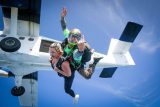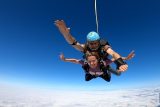How Long Does Skydiving Take?
Blog
 Posted by: Curtis White
3 years ago
Posted by: Curtis White
3 years ago
Time is a precious commodity, and as potentially the most valuable nonrenewable resource we have, our contemporary world has been structured with efficiency in mind. Most of the time, this leaves us charting out our day, divvying up our hours, and determining which activities take precedence. So, when you read that the actual skydive freefall from exit to landing will take about a minute, but that the skydiving process can take up to 3 to 5 hours from check-in to landing, you might be taken aback.
In certain instances, the old adage rings true: good things take time, and it just so happens that this is the case when it comes to skydiving. Here’s a breakdown of the times associated with each portion of the skydiving experience and the key factors that affect how long skydiving takes.
How Long the Skydiving Process Takes
Skydiving Training: 30 Minutes
The time of your skydiving reservation is actually the time that your training class will begin. To ensure you have plenty of time to complete your check-in paperwork and procedures, please arrive 15 minutes prior to your scheduled reservation time.
The tandem skydiving ground school is thorough but not terribly long. Typically, the tandem skydiving training will take approximately 30 minutes. During this time, an instructor will cover the information you need to know to have a successful skydive. You’ll learn how to exit the aircraft, how to achieve the correct body position for freefall, and what you will do when it is time to land. Because of the short duration of the class, it is important that you pay attention. At the end of the class, feel free to ask the instructor any remaining questions you may have.
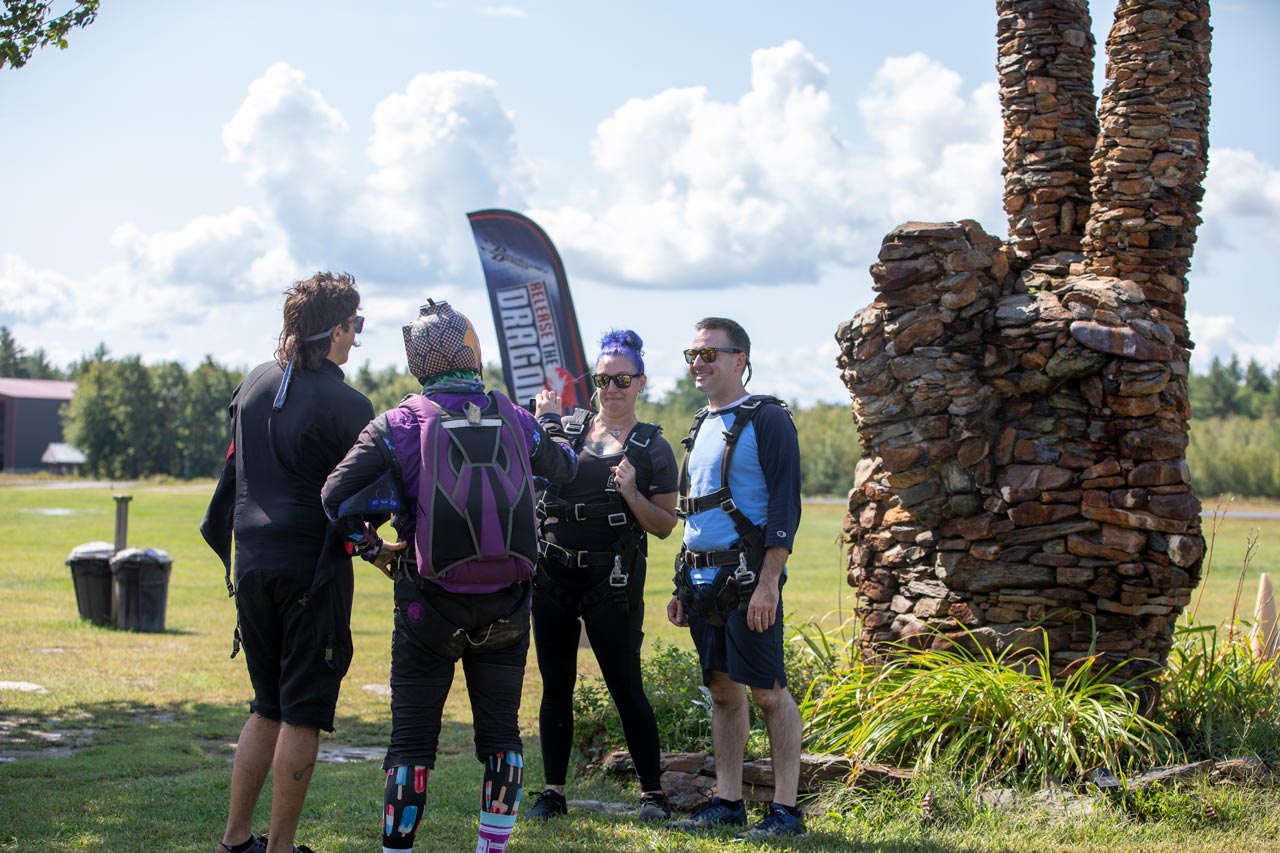
The Ride To Altitude: 15-20 Minutes
Skydive New England is pleased to have one of the most preferred skydiving aircraft in our fleet: the DeHavilland Twin Otter. Not only does this aircraft boast plenty of room (it can seat 22 passengers), but it can get a load of skydivers to a jump altitude of 14,000 feet in about 15-20 minutes. Although swift, many first-timers feel that the plane ride is the longest portion of the skydiving experience. In part, this is due to the anticipation that builds as you near exit altitude.
Freefall: 60 Seconds
For most folks, because of the thrill it invokes, freefall is considered the headlining event. Strictly speaking, freefall is the portion of the skydive that passes by most quickly. But because of the onslaught of sensory input, your perception of time will change, seemingly slowing down.
The average time you will spend in freefall on a skydive is 60 seconds. However, the time that freefall takes can vary based on a jumper’s weight and the orientation in which they are falling. On a tandem skydive, from 14,000 feet, you will reach speeds of up to 120 miles per hour and freefall for 60 seconds before deploying the parachute between 5,000-6,000 feet. A solo skydiver in a more streamlined vertical position falling headfirst can reach speeds of 150-180 mph. Because they typically deploy lower, around 3,000-3,500 feet, the solo skydiver will also be in freefall for approximately 60 seconds.
Fun Fact: Currently, the International Skydiving Commission of the Fédération Aéronautique Internationale’s record for the maximum vertical speed in freefall is an incredible 482.29 km/hr or 299.68 mph! Talk about a freefall that was over in the blink of an eye!
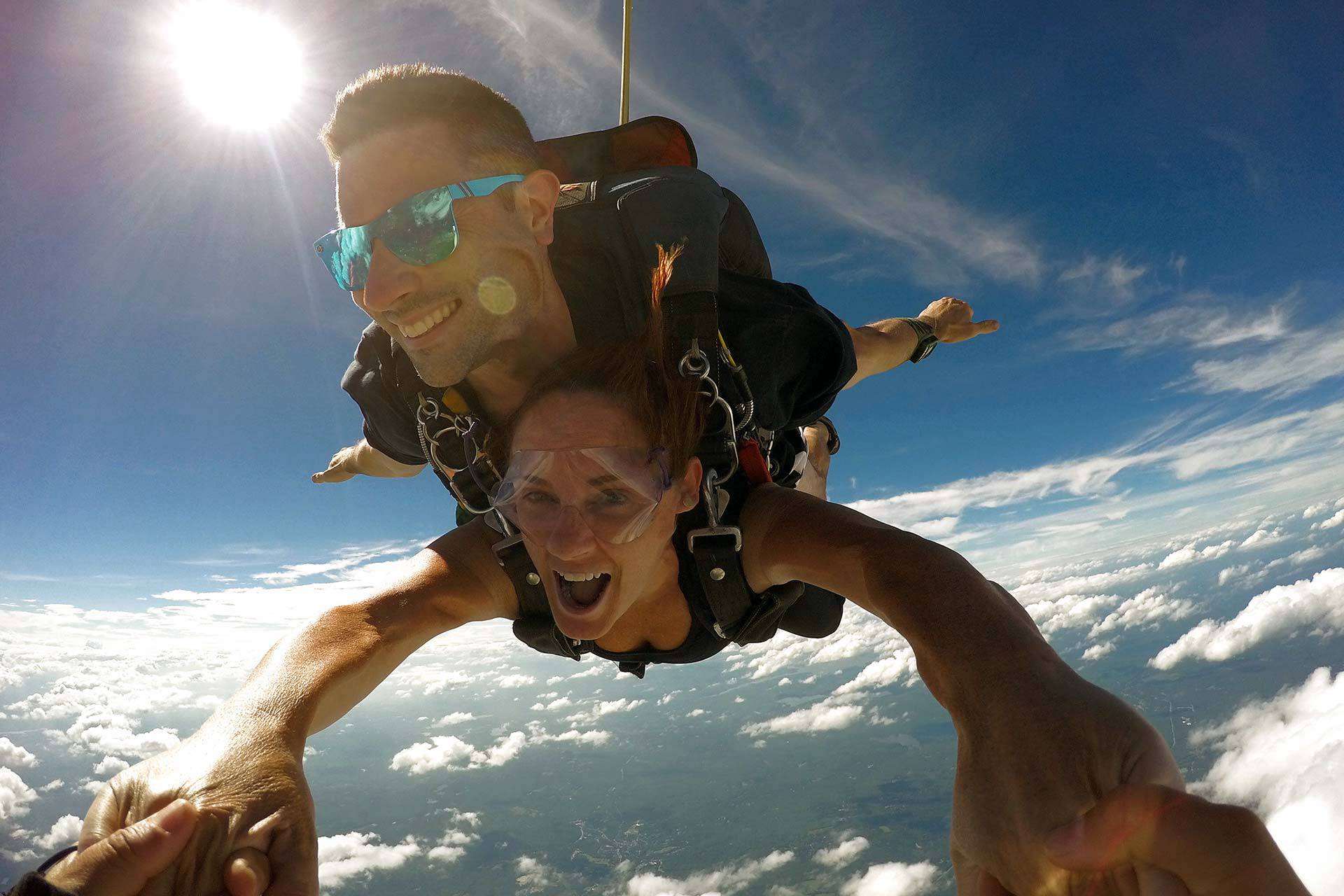
The Parachute Ride: 5-6 minutes
The gentle glide of a parachute ride is a nice complement to the rush of freefall. The parachute ride allows you to slow down and really take in the views around you. It gives you a chance to catch your breath and soak in the experience. Without the whooshing wind of a 120 mph freefall, it’s much easier to communicate with your instructor. Often, he or she will take the time to chat with you and point out the sights!
From the time the parachute deploys to the time your feet touch the ground will take 5-6 minutes. Much like freefall, the time it takes to land will depend on the weight beneath the parachute, the size of the parachute, and the type of flying that is occurring.
A larger parachute will typically descend much more slowly than a small one. Likewise, a small parachute bearing more weight will descend more quickly than a large parachute bearing a lighter person. Finally, some maneuvers are used in parachuting to induce speed, such as turns.
Intermediate and advanced solo skydivers that participate in the sport of “swooping” will often use turns up to a certain degree to increase the speed of their descent to generate power and then plane out the canopy to cover greater distances across the ground.
Fun Fact: In 2017 at the World Games in Wrocław, Poland, Cédric Veiga Rios of France set a Guinness World Record when he piloted his canopy through the entry gate onto a total distance of 196.52 meters (644 feet)
Other Time Variables to Consider
While we like to get you in the air as quickly as possible, there are often factors beyond our control that can cause significant delays. The most notable of these variables is the weather. In skydiving, the big blue wild yonder is our playground, but if there are impending clouds on the horizon, rain, fog, or high winds, we may have to stay grounded until the weather improves. Trust us, we want to be in the air as much as you do, but we have to keep the safety of our customers and our instructors front and center.
When time is of the essence, you need to make every second count. Are you ready to pencil in the adventure of a lifetime? Book your skydive with Skydive New England today!
Enter to Win a Free Skydive
Join our email list and enter to win a free tandem skydive. Drawings in April and December; winner announced on social media.
You’ll get a $10 coupon toward a tandem just for signing up! Must be 18 and under 240 lbs to jump.
*By submitting this form, you are consenting to receive marketing emails from Skydive New England, 40 Skydive Lane, Lebanon, Maine 04027. You can revoke your consent by using the SafeUnsubscribe link located at the bottom of every email. Emails are serviced by Constant Contact.
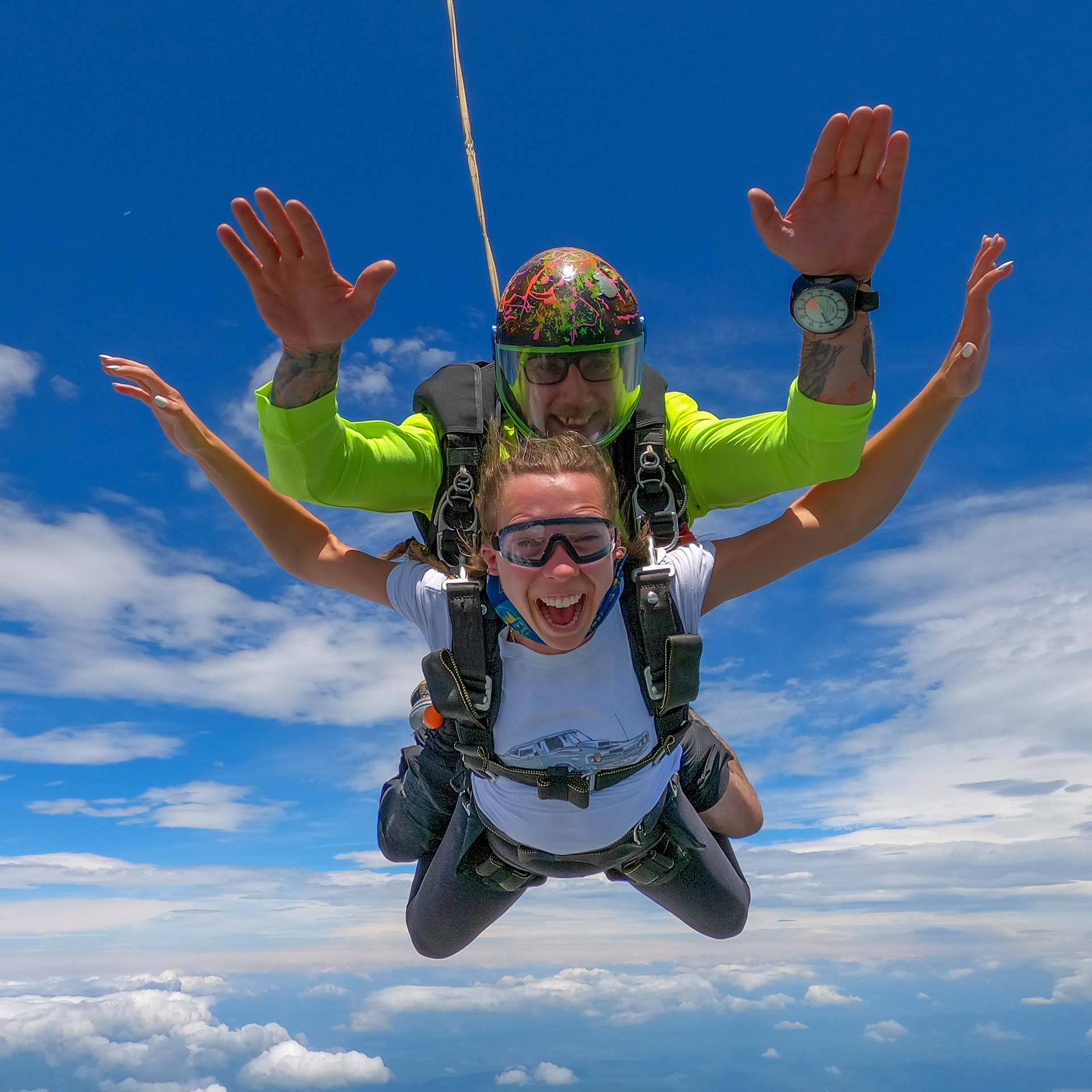
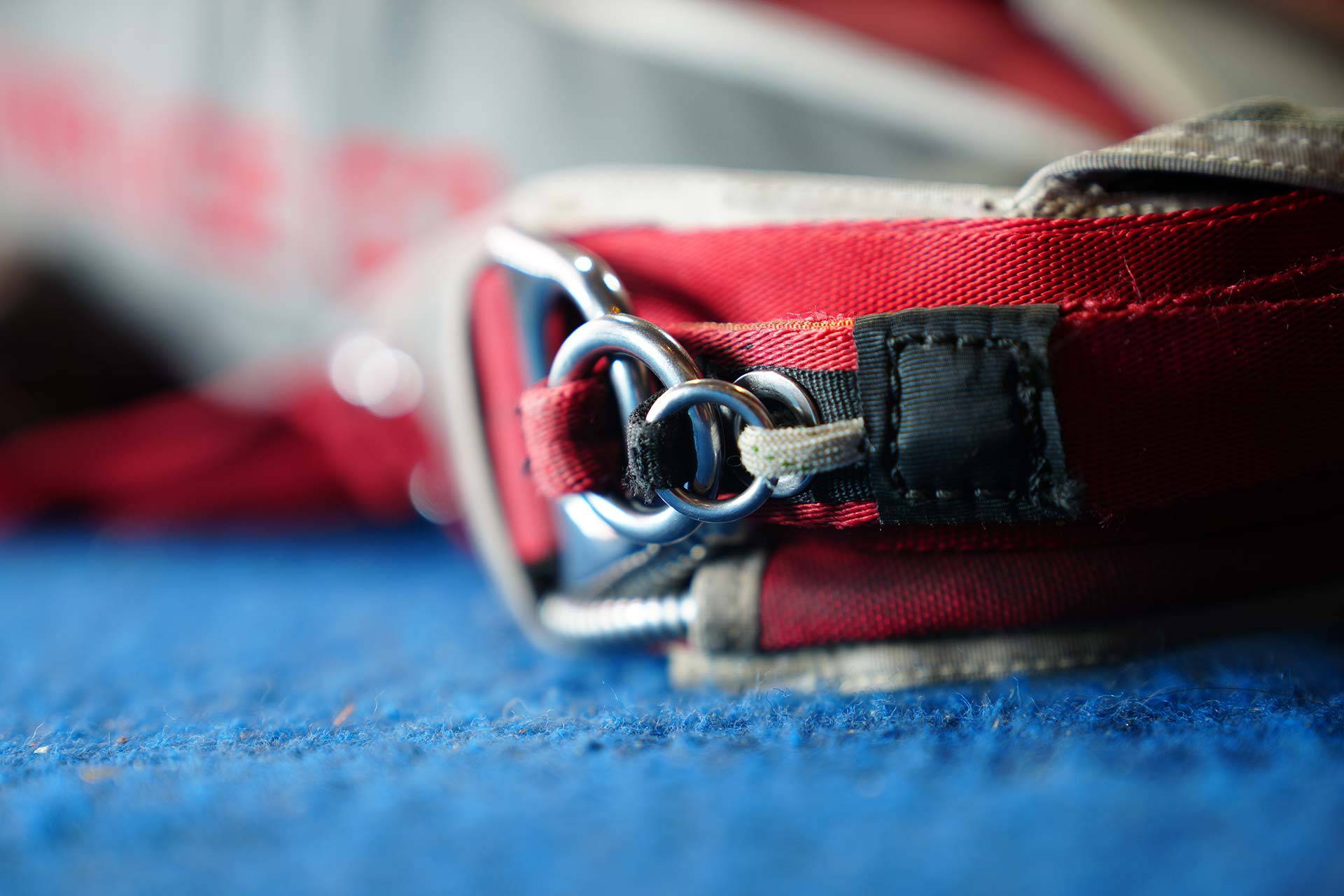
Even More Wicked-Fun Than It Looks!
Come see why the biggest DZ in New England is also the best.


